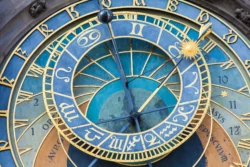Universal Music Day is on October 14th, and it is a very important day to focus on the importance of music. Music is good for the mind, body, and spirit, which explains why many people feel more balanced and positive after listening to music that is the genre of their choice. It improves life, which is why music therapy is an excellent therapeutic treatment for mental illness, autism, stress reduction, mood regulation, boosting social and communication skills, and so on.
British musicologist and academic Michael Spitzer explains in his video on Big Think, “Music’s Power Over Your Brain, Explained”, talks about how music impacts and benefits your psyche, limbic system, memory, and pain relief. Also, the power of sound, such as binaural beats, has a healing effect, and music impacts humans so profoundly that it affects the DNA. Let’s first dive into how music affects your brain that impacts your mood, memory, and pain receptors.
The Impact of Music on the Brain
Music profoundly impacts the mind, body, and soul, and everyone knows it makes them feel better when they listen to it. For thousands of years, people used music for soothing and comfort, and music also helps you tackle challenging projects, so you want to listen to it to keep you motivated and productive. That is also why you must have music playing if you are doing a grueling workout. That is because music improves your mood.
Next after this publicity
Music has a way of increasing blood flow to the emotional areas of the brain. Those brain regions help you control your memory and process emotions. When you hear a song you love, you also get a surge of dopamine, which is that pleasure chemical in your brain, which is why you feel good when you hear it. Therefore, that is why music positively impacts your mood, even if you cannot recall the rhythm or notes. If you hear a song that you do not like or upsets you, the notes and rhythm likely trigger an unpleasant memory from when the melody or the rhythm was popular. If you had a traumatic event, a song from that time will trigger your memory and bring back the trauma. Therefore, that is one of the few times when music may not positively impact you.
According to scientists, music impacts memory because a significant overlap exists between working memory for verbal and musical stimuli. Your working memory works through each piece of music and decodes it like your brain decodes letters as you read. Emotions also magnify your memory, as you may be able to recall each word you heard in a song that you enjoyed listening to in your youth, whether you were in high school or college.
Studies show that listening to music helps brain cells process information more efficiently and helps the brain’s adaptability. That is why it has been said that stroke survivors who listen to music daily will have more verbal memory and cognitive gains than those who don’t listen to music or only listen to audiobooks. Music also helps those with Alzheimer’s disease and those who suffer from cognitive decline engage in conversation when they hear songs from when they were younger for the same reason.
Since music significantly impacts the emotional area of the brain, it also affects the areas of the brain that govern pain. Therefore, that means that music can be tied to pain relief. That is because, as mentioned, music helps with dopamine generation, contributing to your overall well-being. The dopamine increase will lessen the pain perception, and music can also help you distract yourself from the pain that you may be feeling.
Scientists believe that sound waves in music can impact the physical body vibrations, as sound therapy uses low-frequency sounds to create beats, which therapists use on the body, as it has already shown improvement in those who struggle with motor skills function. Sound therapy involves using different frequencies to help treat various ailments, such as binaural beats and isochronic tones.
Next after this publicity
The Benefits of Sound Therapy
Sound therapy is a form of therapy that utilizes frequencies for healing mental and physical health. Sound vibrations from 174 Hz to 963 Hz can profoundly affect your mental, physical, and spiritual health, which is why these frequencies in this range are known as the “Holy frequencies.” or “Solfeggio frequencies.”
In ancient history, these frequencies were basic sounds used in Eastern Indian regions and Western Christianity, as they were used in chants by Indian Sanskrit leaders and Gregorian monks. In the 1970s, researcher and doctor Joseph Puelo found the Holy frequencies and began speaking about it. Dr. Puelo found six tones that help the body recover through using mathematics.
As a result of Dr. Puelo, other scientists discovered additional evidence that Solfeggio frequencies profoundly affect the conscious and subconscious mind. Therefore, these frequencies can promote vitality and healing. After more studies on Solfeggio frequencies, scientists have found why frequencies ranging from 174 Hz to 963 Hz are the Holy frequencies therapists use in sound vibration.
At the bottom of the Holy frequency chart, scientists found that 174 Hz provides sound to help with physical pain relief and can be used in chronic pain patients. The frequency range of 285 Hz can help boost immune function and restore tissues while balancing the root chakra. Researchers find that at 396 Hz, the frequency can help remove negative beliefs such as doubt. In contrast, at 417 Hz, the sound vibration can help remove environmental negative energy and help remove anger while balancing the sacral chakra. That is the best vibration to listen to for sleep.
At 432 Hz, that is known as the “Heartbeat on Earth” as its frequency aligns with the Earth’s magnetic field and can help reduce blood pressure and heart rate. It can help induce grounding and relaxation. At 528 Hz, the frequency that John Lennon wrote in “Imagine” is known as the love frequency. It has been found that this frequency can help alleviate stress and reduce cortisol levels.
At 741 Hz, researchers found that this frequency can help release emotional blockages and toxicity from the environment while balancing the throat chakra. At 852 Hz, one of the higher Solfeggio frequencies can allow you to access profound conscious states while stimulating intuition. Finally, at the highest end of the Holy frequencies, 963 Hz is the “God frequency,” as it helps to bring clarity and removes brain fog. It also enables you to create a connection to the Universe and the divine through meditation.
Next after this publicity
Therefore, Solfeggio frequencies heal many ailments involving pain, mental health, insomnia, and other imbalances within the chakra system. However, different sound frequencies can heal many ailments not part of the Holy frequencies, as scientists have made other discoveries with sound vibrations.
Lower-frequency sounds that can heal pain management, emotions, anxiety, and insomnia are isochronic tones and binaural beats. Isochronic tones are single sounds, whereas binaural beats are tones played together as these tones stimulate brainwaves. These beats correspond with five brain wave states: beta waves when you are fully conscious, alpha waves when awake but not alert as you are in that state upon going to sleep or waking up, theta waves when you are in REM sleep or a deep meditative state, and delta waves, when you are in a dreamless and deep sleep.
Other than the lower-frequency states of isochronic tones and binaural beats, the difference between these frequencies and Solfeggio frequencies is that the binaural beats and isochronic tones create a rhythmic sound, whereas Solfeggio frequencies create an even sound. You also need to wear headphones to make binaural beats effective, as both ears need to capture the sounds, but you do not need to do that with Solfeggio frequencies and isochronic tones. Whatever sound therapy method someone may need depends on what works for them and their preference. You may wonder how music and sound can profoundly impact the human body.
What is the Science Behind Music and Sound Frequencies?
Researchers have worked for a long time on studying the effects of music and sound on the human body, and biochemist Dr. Glen Rein discovered in 1988 that sound and music impact human DNA. Dr. Rein took similar DNA vials, exposed them to classical, rock, Sanskrit chants, and Gregorian chants, and measured the absorption rate through UV light. That is how Dr. Rein began to assess the effects of the different types of music on the human body. He found that Gregorian and Sanskrit chants raised the UV light, which showed healing and other positive effects. Classical music increased the UV light a little less, and rock music decreased the absorption of UV light, suggesting that rock music can harm your well-being.
That tells you that the music you listen to will impact your overall health and well-being. Since there is nothing wrong with listening to rock music sometimes, it is not the music to listen to if you need spiritual, emotional, physical, and mental healing, as you will want to opt for music with vibrations in the Holy frequencies.
Universal Music Day is on October 14th, the day to explore the wonders of music. You will want to explore how music and sound therapy can benefit you. That is the day to listen to music with vibrations in the Holy frequency range to connect with your mind, body, and spirit and get you into a calm state. Again, if you love rock music, you do not have to stop listening to it even though, scientifically, it is not ideal for your overall well-being. But it is a great day to explore healing Gregorian and Sanskrit chants, and you will feel more balanced.






































